Accidents at work and occupational injuries can have lasting health repercussions for employees, making workplace safety an imperative for both employers and employees. A safe work environment is necessary in reducing incidents related to work as well as supporting worker wellbeing.
Workplace accidents encompass an array of incidents that can happen across industries and job roles. From slips, trips, and falls to machinery accidents, each accident comes with its own set of risks and potential medical ramifications that should be recognized to create effective prevention strategies. Recognizing and understanding common workplace incidents as well as potential medical repercussions is essential in devising preventive strategies for these accidents.
Occupational injuries range from minor bruises and sprains to more serious fractures, head trauma or spinal cord injuries that require hospitalization and even surgeries – the latter often having long-term health repercussions and effecting work performance and capacity as well as emotional trauma for employees who experience workplace accidents.
Employers can reduce workplace accidents by prioritizing workplace safety measures. This means regularly inspecting workplaces to identify potential hazards, implementing safety protocols and providing adequate employee training on workplace safety measures. Employers should foster an environment in which employees feel empowered to report safety concerns and participate in initiatives for preventing work-related incidents.
Slips, Trips, and Falls
Slips, trips and falls are common work-related incidents across industries and environments. Factors like wet or slippery floors, uneven surfaces, cluttered walkways and inadequate lighting all play a role. When employees lose their balance and fall, medical implications can range from minor bruises and sprains to fractures, head trauma or spinal cord injuries resulting in medical treatment being required.
Minor falls can have far-reaching repercussions for one’s health and wellbeing, even seemingly minor ones. Slips on wet surfaces may lead to forceful landings on one’s back, potentially resulting in herniated discs or other spinal injuries; and head injuries caused by falls can result in concussions with lasting cognitive consequences if they’re not diagnosed and managed appropriately.
Employers can reduce slips, trips and falls by prioritizing creating an environment free from hazards. Regular inspections should be performed to identify and address potential threats promptly; installing anti-slip flooring; posting signs alerting employees of wet areas; providing adequate lighting in all work areas are all effective preventive measures that employers can use; additionally offering employees appropriate footwear as well as awareness programs can further lower incidence rates for slips, trips and falls accidents.
Overexertion and Musculoskeletal Injuries
Overexertion is a leading cause of work-related incidents, particularly in physically demanding jobs such as construction, healthcare, and manufacturing. Overexertion occurs when employees exceed their physical capabilities or perform repetitive motions for extended periods without adequate rest or proper ergonomics.
Musculoskeletal injuries caused by overexertion can affect any part of the body, including back, neck, shoulders, limbs and fingers. They typically manifest in strains, sprains, herniated discs, tendonitis or carpal tunnel syndrome – leaving victims in considerable pain while restricting mobility and decreasing productivity as a result of these injuries.
Employers play an instrumental role in protecting employees against overexertion and musculoskeletal injuries by adopting ergonomic practices in the workplace. This includes providing adjustable workstations that enable employees to customize their positions to promote proper posture and decrease strain on the body, and by offering lifting aids, assistive devices, ergonomic keyboards or any other form of ergonomic equipment to minimize repetitive motion injuries associated with repetitive motions.
Proper employee training is essential to equipping workers with proper lifting techniques and ergonomics. By teaching employees to lift objects safely, maintain proper body mechanics, utilize assistive devices effectively, and take regular breaks as well as practicing stretching exercises can reduce overexertion injuries significantly. Furthermore, by informing workers on taking regular breaks for stretching exercises and adopting good posture it can reduce muscle fatigue and strain significantly.
Job rotation can also help minimize overexertion risks by encouraging employees to vary their physical activities and avoid prolonged repetitive tasks, helping spread physical demands across various muscle groups and reduce fatigue-related injuries. Regular breaks should also be encouraged to give employees enough rest and recuperation time, thus decreasing fatigue-related incidents.
Employers can significantly reduce overexertion and musculoskeletal injuries through ergonomic practices, proper training, adjustable workstations and regular breaks or job rotation. By prioritizing ergonomic practices, providing appropriate training and offering adjustable workstations while encouraging regular breaks and job rotation, employers can greatly decrease overexertion incidents while simultaneously creating a healthier and more productive workforce.
Workplace Violence
Workplace violence is a grave danger that can have far-reaching repercussions for victims. This includes physical attacks, verbal abuse, threats and harassment that have both physical and psychological ramifications for employees.
Workplace violence can result in bruises, fractures and other physical injuries which require medical treatment to alleviate their discomfort and may have lasting repercussions on both victims’ well-being and ability to work. Psychological consequences should never be discounted: victims may experience emotional trauma, anxiety and post-traumatic stress disorder (PTSD). All these consequences could significantly diminish both their well-being and ability to work.
Employers must create comprehensive violence prevention policies and procedures, which include installing security measures such as surveillance cameras, access control systems and panic alarms. Training employees on conflict resolution techniques such as de-escalation methods as well as how to recognize signs of potential violence is also key for effectively combatting workplace violence. Encouraging an open work culture where employees feel safe reporting incidents is also key for successfully combatting it.
Machinery Accidents
Employees working with heavy machinery face an increased risk of accidents that can result in serious injuries. Machinery related work-related incidents may happen due to lack of training, improper equipment usage, mechanical failures, and inadequate safety precautions.
Accidents involving machinery can have severe and long-lasting medical ramifications for employees, often including crushing injuries, amputations, severe lacerations or fractures, even fatalities. Immediate medical attention may be necessary and long-term rehabilitation could be needed in order to regain functionality or accommodate for permanent disabilities.
Employers must prioritize training programs that teach employees proper machine operation, maintenance procedures and safety protocols in order to avoid machinery accidents. Employees operating the machinery should receive PPE specific to it such as helmets, goggles, gloves or reinforced clothing to protect themselves while conducting regular inspections, maintenance and repairs in order to reduce mechanical failure risks.
Falling Objects
Industry sectors where objects are stored at heights or on shelves pose a significant hazard to employees, particularly construction, warehousing and manufacturing settings that involve handling heavy materials or equipment. Falling objects pose the potential threat of severe head injuries, concussions, fractures and internal injuries resulting in long-term medical implications.
Employers can reduce the risk of falling objects by adhering to stringent safety protocols, which include using appropriate restraints such as straps or safety nets on shelves and placing protective barriers or guardrails around elevated storage areas as an extra layer of defense.
Employers should equip workers with hard hats or helmets as an essential protective measure. Employers should ensure employees wear appropriate personal protective equipment (PPE) whenever in areas where such risks exist.
Regular inspections should be carried out of storage areas to identify and address potential hazards quickly, including assessing the stability of shelving units, checking for loose objects or objects left unsecured on shelves and assuring correct weight distribution on them. Any unstable or damaged storage equipment must be repaired or replaced immediately.
Educate your employees on the importance of maintaining a clutter-free work environment to prevent injuries caused by falling objects. Encourage regular housekeeping practices and emphasize the necessity to report any loose or unstable objects quickly are vital in creating a safe workplace. Employees should also be empowered to identify potential hazards while actively taking part in safety initiatives.
Electrical Accidents
Electrical happen in various work environments, from construction sites and manufacturing facilities to office buildings. Electrical accidents often result from direct contact with live wires, defective equipment, inadequate grounding or incorrect use of
electrical tools – or insufficient maintenance of electrical systems – leading to injuries that necessitate emergency medical treatment.
Electrical accidents can have dire medical repercussions that are both severe and life-threatening. Electric shocks can lead to external burns as well as internal injuries and complications. Cardiac arrhythmias and nerve damage may be consequences; in extreme cases they can even cause cardiac arrest leading to immediate cardiac arrest or even death.
Electrical shock injuries require immediate medical care to assess and address internal injuries, cardiac complications or neurological effects. Burn injuries from electrical contact require special treatment in order to promote healing and avoid infections.
Employers must place great importance on providing employees who work around electrical equipment with proper electrical safety training programs to identify electrical hazards, properly use tools and adhere to established safety procedures. Employees should understand the necessity of wearing PPE such as insulated gloves and safety goggles in order to reduce risks from electric shock.
Routine inspections should be performed on electrical systems and equipment to identify any faults, damage or malfunctioning components that might threaten their integrity. Any identified issues must be immediately addressed through repairs or replacements in order to safeguard its future viability.
Implementing effective grounding techniques and ensuring electrical installations adhere to safety standards are both key preventive measures against accidental electric shock. Establishing lockout/tagout procedures – where electrical sources are isolated during maintenance or repair works – further decreases this risk.
Employers can significantly decrease electrical accidents and protect employees from severe medical consequences associated with electric shock injuries by emphasizing electrical safety, offering comprehensive training, conducting regular inspections and promptly addressing any identified issues. By doing this, employers can significantly decrease electrical accidents while protecting their workforce against shock injuries caused by electric current.
Chemical Exposure
Chemical exposure accidents pose a threat for workers in industries that deal with hazardous chemicals, which could occur through spills, leaks, improper storage or handling practices or lack of protective gear.
Chemical exposure accidents may have immediate and long-term health repercussions, including chemical burns, respiratory ailments, eye injuries and organ damage. Longer-term exposure may lead to chronic health conditions like respiratory disorders, neurological damage or cancer.
Employers can minimize chemical exposure accidents by implementing comprehensive safety protocols. This should include providing employees with suitable PPE such as gloves, masks and protective clothing; creating clear guidelines for the safe handling, storage and disposal of hazardous chemicals; as well as training their workers on handling techniques and emergency response protocols.
Prioritizing safety measures, providing adequate training, and implementing stringent protocols can significantly lower the incidence of machinery accidents, falling object incidents, electrical accidents and chemical exposure incidents, thus mitigating their medical impacts for employees.
Conclusion
Workplace accidents and occupational injuries can have devastating repercussions for employees. They may result in physical and emotional injuries that should never occur at work, underscoring the importance of prioritizing workplace safety measures to create an environment free from workplace-related incidents while safeguarding employee welfare. Employers can implement effective safety measures to foster worker well-being by creating an atmosphere free from workplace-related incidents while offering their staff healthful working conditions.
Preventing workplace accidents requires an integrated strategy. Employers can begin by conducting risk analyses to identify potential hazards, then implement safety protocols. Furthermore, comprehensive training programs must ensure employees possess all of the knowledge and skills needed for operating safely within their workplace environment.
Establishing and upholding a culture of safety are also paramount. Employers should create open lines of communication where employees feel free to report safety concerns or near-miss incidents, and hold regular safety meetings or training sessions where issues can be tackled in advance.
Employee participation in creating a safe work environment is critical to cultivating an effective safety culture, so employees must actively contribute by adhering to
established safety protocols, using PPE when appropriate and reporting potential hazards. Encouraging ownership and accountability among staff members will contribute towards strengthening an overall safety culture in your workplace.





